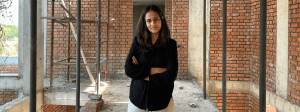(May 6, 2024) A few weeks ago, the curtains on Bijoy Jain’s latest exhibition – Breath of an Architect – were drawn at Paris’s prestigious contemporary art museum, Fondation Cartier, after being on display for over four months. The installation which investigates the connections between art, architecture, and material, once again brought to the forefront the work of one of India’s most renowned architects, who often refers to himself as an artist – Bijoy Jain. “I don’t believe in the conventional separation of architects and artisans,” said Bijoy, whose work has been displayed at the architecture biennial in Venice and Sharjah. But mostly has left people in awe at places like Japan, France, and the foothills of the Himalayas as his craft reflects a deep concern for the relationship between man and nature, and serves as a source of inspiration, contemplation, and quietude for everyone.
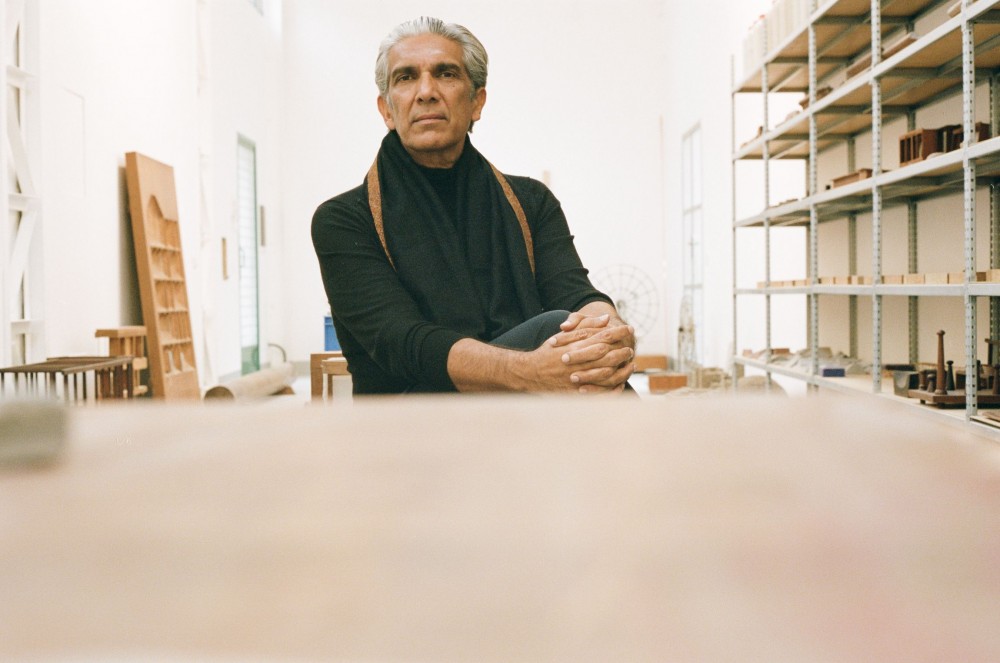
Bijoy Jain
A trip that changed it all
Growing up in Bombay in the 60s and 70s, he was surrounded by classical Hindustani music which was practiced by his mother, and books that belonged to his father. But it was travel that shaped his worldview at a young age. Bijoy explored the length and breadth of the country, courtesy of his parents who took trips across India when he was young. One such trip landed him at Ajanta and Ellora Caves, an experience that left an everlasting impression on the mind of a then-five-year-old. “The Ellora Caves are a living space. They transcend time. You may have an immediate (response) or it may take a length of time.. but eventually, you are not the same person as when you entered the space,” said the architect.
India to the US – A journey
A professional swimmer, he swam across the English Channel as a teenager but things took a turn for the worse when in 1983, his brother killed himself, and shortly after, his father died of a heart attack followed by his mother. “All this happened in two and a half years. I had started architecture school in Mumbai, and I loved it. But after their deaths, everything was completely different. The window I was looking through had changed,” he revealed, adding that he moved to the US to escape reality and enrolled in Washington University in St Louis. It was a stroll to the Laumeier Sculpture Park on his second day that changed it all for him when he discovered Michael Heizer, Donald Judd, and Richard Serra. “For me, Michael Heizer’s Double Negative (a 1969 Land Art intervention near Overton, Nevada) is a fabulous work. Discovering it opened something for me,” he added.
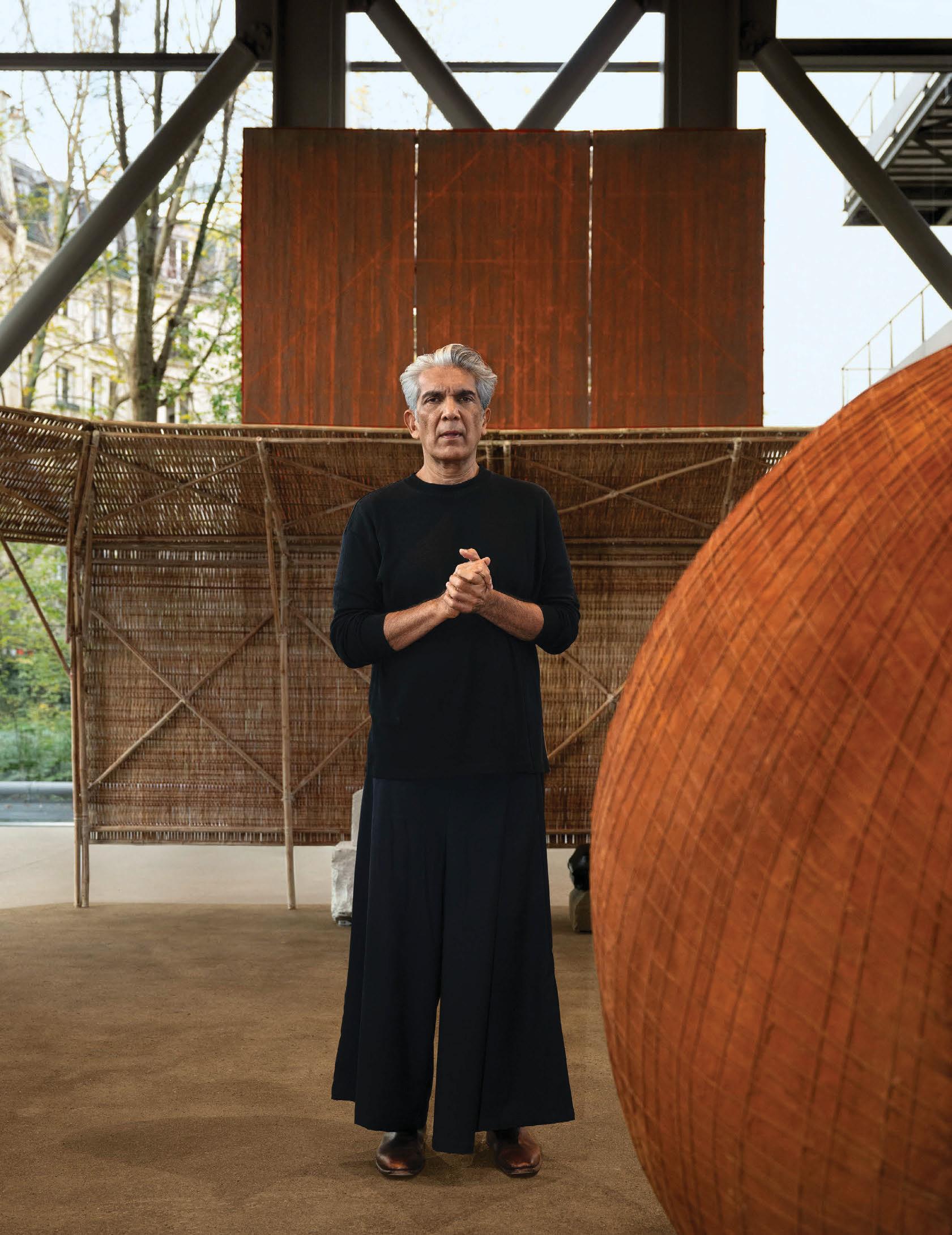
After completing his studies, he moved to California to work at Richard Meier’s model shop, and after gaining experience in the US and UK, he returned to India to start his studio in Alibag. It was yoga that brought him back to India as he wanted to practice yoga at the place of its origin. “Coming back after a long period away, I was making peace with home again.” Returning to India was a sort of rediscovery for Bijoy as landscapes had Indian sensibility and had nothing to do with modern architecture. Constructing his first home in Alibag after graduation, he ended up tossing away his hard work of six months as he found the local builders’ techniques incredible. “For me, it was a big learning curve to become familiar with another way of building,” the Global Indian said.
Finding his niche
In 1995, he founded Studio Mumbai which is at the intersection of tradition and modernity, and in the last two decades as an architect, he has earned accolades and love across the globe for his work. From designing a textile studio in the foothills of the Himalayas for Japanese textile weaver Chiaki Maki to envisioning Lantern Onomichi, a boutique hotel on the slopes of Mount Senkoji in Hiroshima, Bijoy’s work stands as a testimony to his determination and expertise.
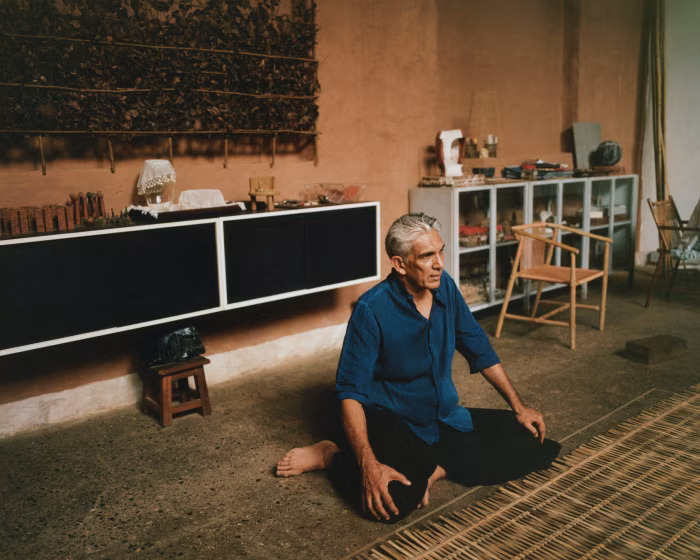
He works mostly with wood, basalt, bamboo, concrete, and earth but he calls air, water, and light as his preferred material of choice as he seeks to forge connections between indoor spaces and the great outdoors. Known to design and build in a restricted environment without much manipulation, he loves “finding a gap or an in-between space in a restricted environment.” “Whatever the medium is, the objective is to influence the trajectory of light in a space. Any constricted space can be made open in its experience and perception. That is the potential that architecture holds,” says Bijoy, whose studio won the Global Award for Sustainable Architecture from L’Institut Francais D’Architecture in 2009. Importantly, his creations reflect a profound attachment to a distinct sense of place and landscape, acknowledging the geographical, climatic, and social nuances of the environment surrounding the architecture. His work which stretches from private homes across India to hotel restorations in Japan and a winery in France, has won many awards and has even been displayed at architecture biennials in Sharjah (2013), Venice (2010, 2016), and Chicago (2017).
Apart from structures, he has also designed furniture, a paper-mâché armchair, and a stone table for Hermes, a French fashion house. And has his work acquired by the Canadian Centre for Architecture, and Centre Pompidou in Paris. Presently, Bijoy is engaged in crafting a townhouse in Brooklyn, revitalizing a community on a secluded Greek island, and designing a winery in France. It’s working on a winery that holds a special place as it “holds the possibility of influencing the way the taste of the wine evolves.” From harnessing natural light to strategizing the placement of barrels and bottles, and orchestrating the flow of air around them, every decision is a part of the journey of discovery and learning.
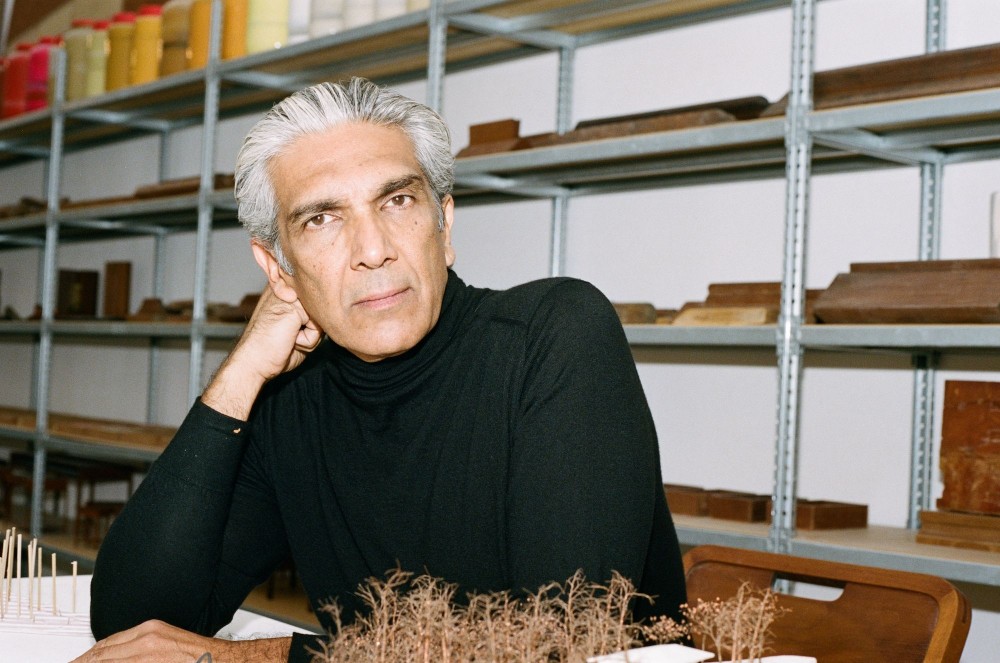
Bijoy Jain
Having worked for three decades now, Bijoy is keen to open a small bronze foundry. “I don’t know why, but I feel motivated to explore fire as a material,” he revealed. Bijoy is an architect known worldwide for his buildings and designs, and people everywhere admire how he mixes nature and human creativity in his work. From the interplay of light and space to the seamless integration of natural elements into his designs, his work transcends mere structures, creating immersive experiences that resonate deeply with all who encounter them. His unwavering commitment to forging connections between the built environment and the natural world serves as an inspiration for architects and admirers alike, leaving a mark on the architectural landscape of our time.


